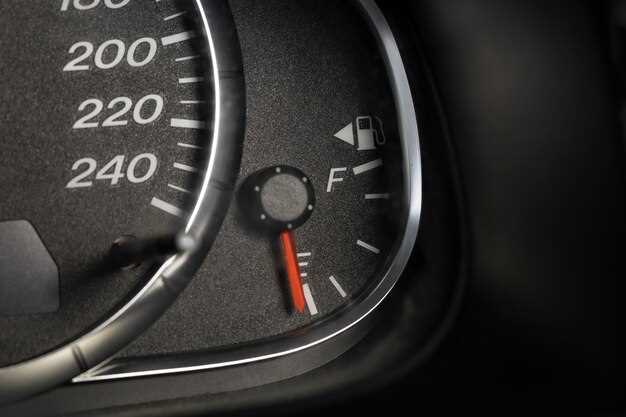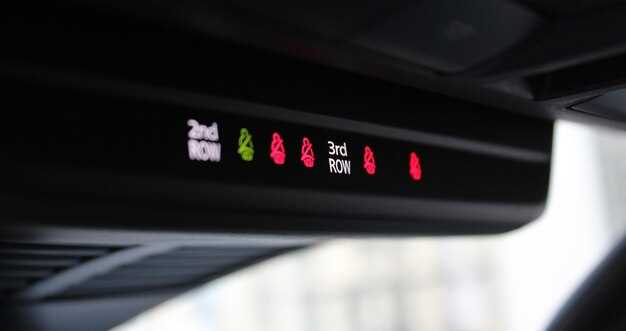
In the world of high-performance vehicles, maintaining optimal engine function is crucial for both safety and performance. One common issue that can severely impact engine efficiency and driving experience is engine misfire. A misfire occurs when one or more cylinders fail to ignite properly, leading to a momentary loss of power and an uneven engine operation.
Detecting the signs of a misfire early can save drivers from costly repairs and engine damage. Symptoms such as rough idling, loss of acceleration, and unusual noises can indicate that there is an underlying issue with the ignition system, often related to the spark plugs or ignition coils. Understanding these signs can empower car enthusiasts and everyday drivers alike to take action before the problem escalates.
Moreover, with high-performance cars pushing the limits of engineering, being alert to any subtle shift in performance is essential. This article will explore the common signs of engine misfire, how to diagnose them, and the critical role that spark components play in maintaining engine health.
Recognizing Symptoms of Engine Misfires
Engine misfires can significantly impact the performance of high-performance cars, leading to reduced power output and increased emissions. Identifying the signs early can prevent extensive damage and costly repairs. One of the primary symptoms of an engine misfire is a noticeable rough idle. When the engine is not firing correctly, it can cause vibrations and an uneven running sensation.
Another common indicator is a loss of power during acceleration. Drivers may experience a hesitation or a lack of responsiveness when pressing the gas pedal. This can be attributed to faulty spark plugs or issues with the ignition system, which can disrupt the combustion process.
Sound is also a critical factor. A misfiring engine often produces an irregular backfiring noise, especially when the vehicle is under load. This occurs when unburned fuel ignites in the exhaust system, signaling that something is off with the engine’s performance.
Additionally, the Check Engine light will often illuminate on the dashboard when a misfire is detected. This warning can provide specific trouble codes that point to malfunctioning components within the ignition system or fuel delivery.
Finally, an increase in fuel consumption can also indicate misfires. Inefficient combustion results in more fuel being used to achieve the same power output, stressing the importance of monitoring fuel economy trends.
In conclusion, recognizing these symptoms early can help maintain the high-performance capabilities of your vehicle and prevent further degradation of its important engine components.
Understanding Spark Plug Functions and Their Impact
Spark plugs play a crucial role in the ignition system of high-performance cars. They are responsible for igniting the air-fuel mixture in each cylinder, producing the necessary combustion to propel the vehicle. When these components function properly, they ensure smooth engine operation and optimal performance. However, issues with spark plugs can lead to engine misfire, significantly affecting power output and driving experience.
The function of a spark plug involves generating a spark at precisely the right moment during the engine’s cycle. This precision is critical, especially in high-performance applications where timing and efficiency are paramount. An improper spark can lead to the mixture burning unevenly, resulting in a misfire. This occurs when one or more cylinders fail to fire, causing a noticeable drop in power and possible engine damage if left unaddressed.
Understanding the impact of spark plug condition is essential for maintaining performance. Factors such as wear, fouling, and improper gap can all compromise a spark plug’s effectiveness. Regular inspection and timely replacement can prevent misfires and maintain engine health.
| Causes of Spark Plug Failure | Impact on Engine Performance |
|---|---|
| Wear and Tear | Reduced ignition efficiency, potential misfire |
| Fouling (carbon build-up) | Irregular combustion, loss of power |
| Improper Gap | Delayed or weak spark, increased chances of misfire |
| Overheating | Pre-ignition, engine knocking, misfire risk |
In high-performance cars, where engine output and responsiveness are critical, monitoring spark plug condition can lead to significant improvements in reliability and efficiency. Recognizing the signs of potential misfire related to spark plug issues can help in taking proactive measures to ensure optimal vehicle performance.
Diagnostic Tools for Detecting Misfire Issues
In high-performance cars, detecting engine misfires requires specialized diagnostic tools that can pinpoint the problem accurately. A misfire generally occurs when the combustion process fails to ignite in one or more cylinders, often caused by issues related to the ignition system, fuel delivery, or engine timing.
One of the essential tools for diagnosing misfire issues is the OBD-II scanner. This device interfaces with the car’s onboard diagnostics system to provide real-time data on engine performance. The scanner will display trouble codes related to misfires, helping technicians identify which cylinder is affected. Codes such as P0301, P0302, etc., indicate misfires in specific cylinders, guiding further investigation.
Another crucial tool is a digital multimeter, which can test the electrical output of the spark plugs and ignition coils. Checking for proper voltage and resistance helps determine if the ignition components are functioning correctly. If the spark plug shows inconsistencies or signs of wear, it may be the root cause of the misfire.
Additionally, compression testers are valuable for assessing the engine’s internal health. Low compression in a cylinder can lead to misfires, and a compression test can reveal underlying issues such as valve problems or piston damage. This diagnostic step is critical in high-performance cars where engine tolerances are very tight.
For those looking to diagnose fuel delivery issues, a fuel pressure gauge is indispensable. It measures the fuel pressure supplied to the injectors. Inadequate pressure may cause misfires due to a lack of fuel, which is essential for combustion.
Lastly, an oscilloscope can provide a detailed view of the ignition waveforms. By analyzing the waveforms of the spark signals, technicians can identify problems such as weak spark or timing errors that could lead to a misfire. This precise diagnostic technique is invaluable for tuning and high-performance applications.
Using these diagnostic tools effectively allows technicians to accurately identify misfire signs and implement the correct solutions, ensuring the engine operates efficiently and maintains peak performance.
Common Causes of Misfires in High-Performance Vehicles

Misfires in high-performance vehicles can significantly affect engine performance, efficiency, and longevity. Understanding the common causes of these occurrences is crucial for maintaining optimal vehicle operation.
1. Faulty Spark Plugs: Spark plugs are essential for ignition in internal combustion engines. Over time, they can wear out or become fouled due to carbon deposits, oil, or other contaminants. A malfunctioning spark plug may fail to ignite the air-fuel mixture properly, leading to a misfire.
2. Ignition System Problems: The ignition system includes components such as ignition coils, wires, and distributors. A failure in any part of this system can disrupt the spark needed for combustion. For example, a faulty ignition coil may deliver an inadequate spark, preventing the engine from firing correctly.
3. Fuel System Issues: Improper fuel delivery can also result in a misfire. Clogged fuel injectors, fuel pump failures, or a dirty fuel filter can restrict the flow of fuel to the engine. When the correct amount of fuel is not delivered, it can lead to incomplete combustion.
4. Vacuum Leaks: High-performance engines require precise air-fuel mixtures. Vacuum leaks can introduce extra air into the intake system, skewing the mixture and potentially causing misfires. Diagnosing a vacuum leak promptly is critical for engine performance.
5. Engine Timing Problems: The timing of the spark is crucial in high-performance vehicles. If the timing is off, whether due to a worn timing belt or a malfunctioning camshaft, the spark may occur too early or too late. This can lead to inefficient combustion and misfires.
6. Engine Compression Issues: Low compression in one or more cylinders can contribute to misfires. Problems such as worn piston rings, damaged valves, or head gasket failures can result in reduced compression, affecting the engine’s ability to fire properly.
7. Sensor Malfunctions: High-performance vehicles depend on various sensors, including the mass airflow sensor (MAF) and throttle position sensor (TPS). If these sensors fail or provide inaccurate readings, the Engine Control Unit (ECU) may deliver incorrect fuel or spark timing, resulting in misfires.
Identifying and addressing these common causes of misfires is essential in ensuring the high performance and reliability of your vehicle. Regular maintenance and diagnostics can help avoid the detrimental effects of engine misfires.
Steps to Troubleshoot Spark Plug Problems
When experiencing engine misfire in high-performance cars, one of the first components to inspect is the spark plug. Here are the steps to effectively troubleshoot spark plug issues:
-
Gather Necessary Tools: Before beginning, ensure you have the required tools at hand, including:
- Socket wrench set
- Spark plug gap gauge
- Torque wrench
- Cleaning brush or compressed air
- Digital multimeter (for advanced diagnostics)
-
Visual Inspection: Begin by removing the spark plug from the engine. Conduct a thorough visual inspection:
- Look for any signs of wear or damage on the spark plug body.
- Check the color of the spark plug tip; it should be light brown or gray.
- Inspect for oil or carbon buildup, which can indicate engine issues.
-
Check Spark Plug Gap: Using a spark plug gap gauge, measure the gap between the electrodes. Incorrect gap settings can cause misfire:
- Refer to the manufacturer’s specifications for the correct gap range.
- If the gap is too wide or too narrow, adjust it carefully using a suitable tool.
-
Test Spark Quality: To determine if the spark plug is firing correctly:
- Reconnect the spark plug wire but keep the plug grounded against the engine.
- Have someone crank the engine and observe the spark. It should be a strong, blue spark.
- Dim or yellow sparks may indicate a faulty plug or ignition issue.
-
Inspect Ignition Coil: If there are signs of spark issues, inspect the ignition coil associated with the spark plug. A malfunctioning coil can lead to a misfire:
- Check for any visible damage or corrosion on the coil.
- Perform a resistance test using a multimeter to ensure proper functionality.
-
Replace as Necessary: If any abnormalities are detected during inspection, consider replacing the spark plug:
- Use the correct type of spark plug recommended by the manufacturer.
- Ensure proper torque when installing a new spark plug to avoid future issues.
-
Reassemble and Test: After addressing the spark plug issues, reassemble all components:
- Start the engine and check for smooth operation without misfire.
- Monitor engine performance over the coming days for any recurring symptoms.
By following these steps, you can identify and resolve spark plug problems effectively, ensuring optimal performance in your high-performance car.
When to Seek Professional Help for Engine Misfires

Engine misfires can significantly impact the performance of high-performance cars. Recognizing the signs and knowing when to seek professional help is crucial for maintaining optimal vehicle function.
It is time to consult a professional mechanic if you experience any of the following symptoms:
- Frequent Misfires: If misfires occur regularly and are not isolated incidents, it indicates a deeper problem with the ignition or fuel system.
- Unexpected Loss of Power: A sudden drop in acceleration or power could signify that the engine is struggling to maintain proper function.
- Rough Idling: If the engine shakes or vibrates when idling, this can be a sign of misfires affecting engine stability.
- Check Engine Light: If the check engine warning illuminates on the dashboard, it’s advisable to have the vehicle diagnosed immediately.
- Increased Fuel Consumption: A significant rise in fuel usage may indicate that the engine is working harder due to misfires.
- Strange Noises: Unusual sounds, such as popping or backfiring, can indicate ignition timing problems linked to misfires.
Professional mechanics have the expertise to accurately diagnose and repair issues related to spark plugs, ignition coils, or fuel injectors, which are common causes of misfires. Ignoring these problems can lead to more severe engine damage, resulting in costly repairs.
In summary, if you notice persistent misfires or any related symptoms, do not hesitate to seek professional assistance to ensure the longevity and performance of your high-performance vehicle.
